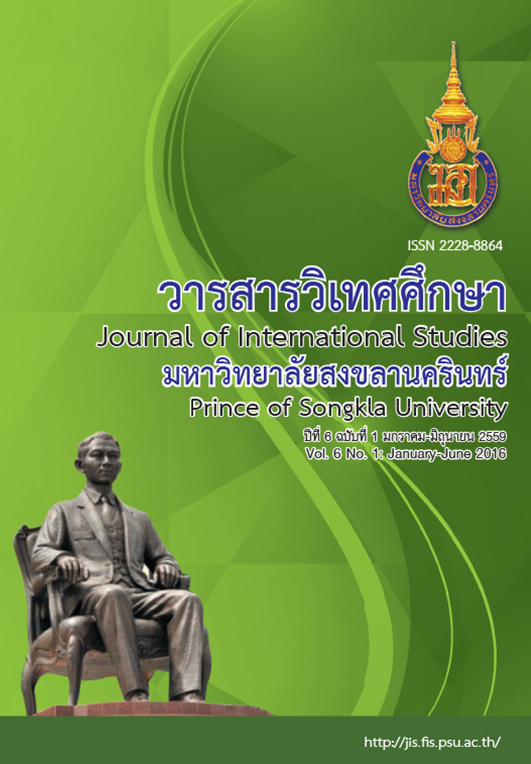A Study of Out-of-Class English Language Learning Activities: A Case Study of Undergraduate Students at Mae Fah Luang University
Main Article Content
Abstract
This study aimed at investigating students’ participation in out-of-class English language learning activities and the perception towards the effectiveness of the out-of-class English language learning activities to their English language development. The subjects of this study were 120 undergraduate students enrolled in English 1 at Mae Fah Luang University. Data collection was conducted by employing a questionnaire and a semi-structured interview. The findings showed that listening to English songs, watching English movies, watching movies with English subtitle, talking with friends in English, watching English lessons on Youtube, and playing English online games were the out-of-class English language learning activities that over 50 percent of the participants have participated in respectively. Moreover, all students perceived the effectiveness of the activities to English language development even though the objectives of participation were different from one another.
Article Details
Statements and opinions expressed in articles herein are those of the authors and do not necessarily reflect the position of the editors or publisher.
Article, information, text, image, etc. which are published in Journal of International Studies, belong to Journal of International Studies. If anybody or any organization would like to use part or whole of them, they must receive written permission from Journal of International Studies before usage.
References
Benson, P. (2001). Teaching and researching autonomy in Language Learning. Harlow: Pearson Education.
Chusanachoti, R. (2009). EFL Learning Through Language Activities outside the Classroom: A Case Study of English Education Students in Thailand. Doctoral dissertation. Michigan State University. USA.
Dulay, H., Burt, M. and Krashen, S. (1982). Language two. New York: Oxford University Press.
Hyland, F. (2004). Learning autonomously: Contextualizing out-of-class English language learning. Language Awareness, 13, 180-202.
Kagan, S. (1995) We can talk: Cooperative Language Learning in the Elementary ESL classroom.
In Wasanasomsith, P. (2003). A Case Study of Thai ESL Learners’ Language and Literacy Learning in an Authentic Situation: Opening a Bank Account. Chulalongkorn University Language Institute, Thailand.
Kuh, G.D. (1994). Student Learning Outside the classroom: Transcending Artificial Boundaries. ASHE-ERIC Higher Education Report No.8.
Lee, C. (2005). Different Types of English to which Korean college students are exposed outside the class. Paper presented at Korean Association of Foreign Language Education.
Nunan, D. (1990). Understanding language classrooms: A guide for teacher-initiated action. London: Prentice-Hall International.
Pickard, N. (1996). Out-of-class language learning strategies. ELT Journal, 50, 150-159.
Suh, J., Wasanasomsithi, P., Short, S., & Majid, N.A. (1999). Out-of-class learning experiences and students’ perceptions of their impact on English conversation skills. Research report. ERIC Clearinghouse on Language and Linguistics. ERIC document no. ED433715.
Sumonviriya, S. (2007). A Comparison of Out-of-Class English Learning Language Activities, Learning Strategies, and Attitude towards Autonomous English Language Learning of English Program and Regular Program Students in Secondary Schools. Master Thesis, Chulalongkorn University.
Wasanasomsithi, P. (1998) Learners’ use of Self-Access Learning Center: Paving the path to Learner Autonomy.
ThaiTESOL Bulletine, 17: 69-87.
Wasanasomsithi, P. (2004). Research in English Applied Linguistic: A Course Book. Bangkok: Sumon Publishing Co., Ltd.
Yap, S.L. (1998). Out-of-class use of English by secondary school students in a Hong Kong Anglo-Chinese School. Master Thesis. University of Hong Kong.


